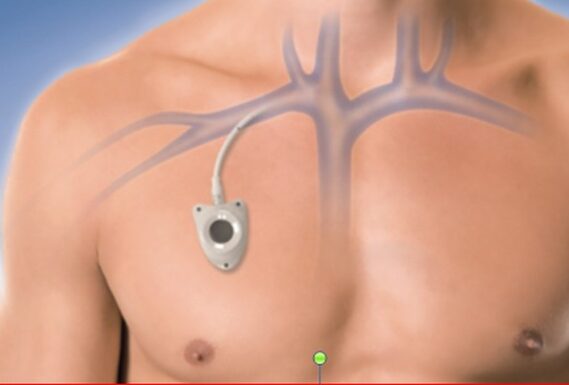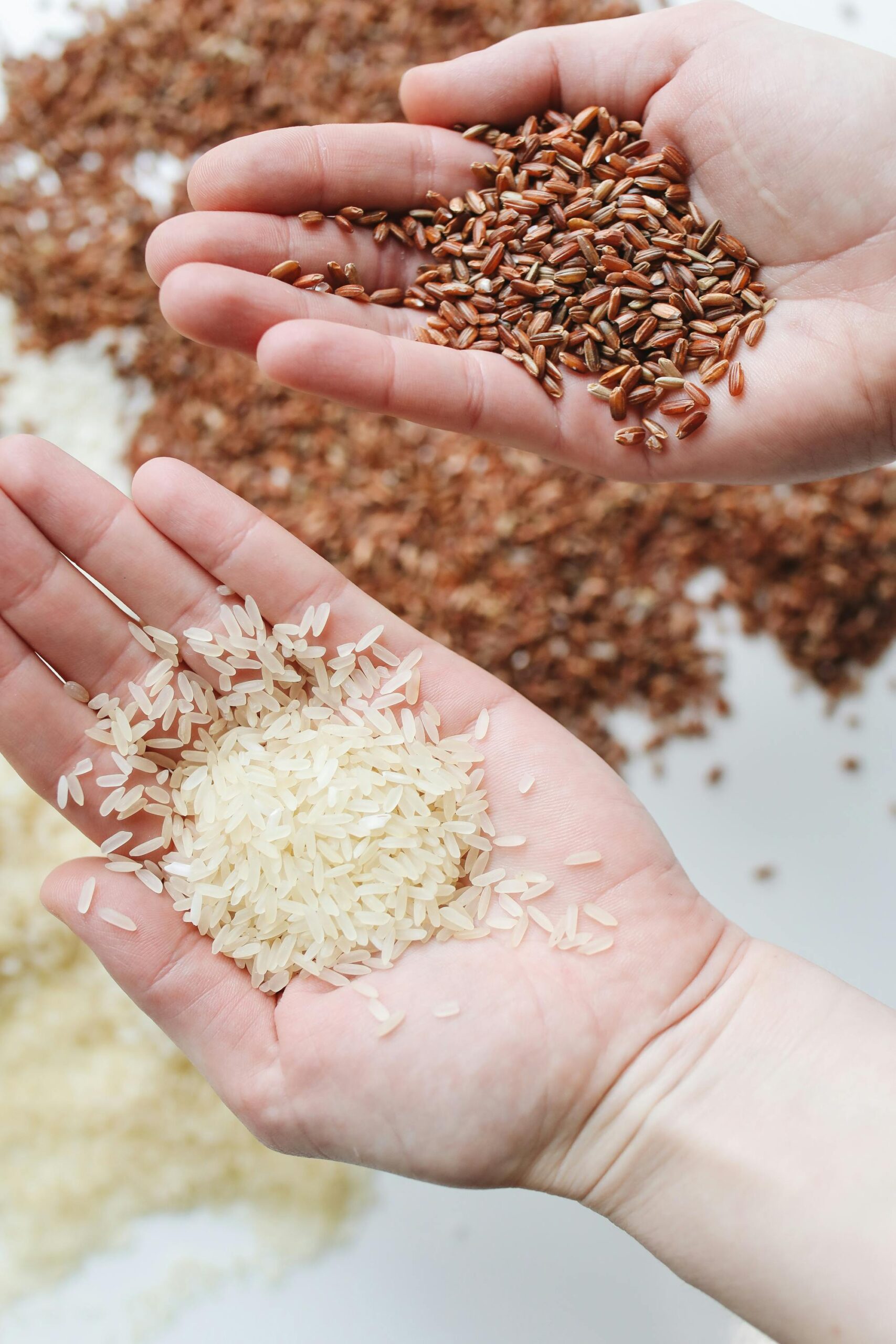Health
Managing Care and Maintenance of Your Portacath: Tips for Patients

Welcome to our blog post on managing the care and maintenance of your portacath! If you or a loved one have recently had a portacath inserted, or are considering getting one, this article is for you. We’ll walk you through what a portacath is, its benefits, how it’s inserted, and most importantly, how to properly care for it. Plus, we’ll cover any possible problems that may arise along the way and share tips on removal when the time comes. So let’s dive in and learn all about this important medical device that can greatly improve your quality of life. Ready? Let’s get started!
What is a Portacath?
A Portacath, also known as an implantable venous access device (IVAD), is a small medical device that is placed under the skin to provide easy and convenient access to your veins. It consists of two main components: a chamber called the port and a catheter that connects the port to a large vein in your body.
The port itself is made of biocompatible material, usually titanium or plastic, which allows it to be compatible with your body without causing any adverse reactions or complications. The catheter is typically made of silicone or another flexible material that can withstand repeated use.
The purpose of a Portacath is to make it easier for healthcare professionals to administer medications, fluids, blood products, or other treatments directly into your bloodstream. This eliminates the need for multiple needle sticks and reduces discomfort during treatment.
Using a Portacath offers several benefits compared to traditional intravenous methods. First and foremost, it provides long-term access for frequent treatments over an extended period of time. It also minimizes damage to peripheral veins since all injections are directed through the central venous system instead.
In addition, having a Portacath reduces the risk of infection associated with repeated needle sticks because it remains fully implanted under your skin until removal is necessary. This medical device improves patient comfort and convenience while allowing for more efficient delivery of essential therapies.
Benefits of Using a Portacath
If you or a loved one is undergoing medical treatment that requires frequent access to veins, then you may have heard of a portacath. This small device can make life easier for patients by providing a convenient and reliable way to administer medication or draw blood. In this blog post, we will explore the benefits of using a portacath and why it has become such an essential tool in modern healthcare.
One of the primary advantages of having a portacath is its long-term usability. Unlike traditional IV lines that need constant reinsertion, a portacath can remain in place for several months or even years with proper care. This means fewer needle sticks and potential complications associated with repeated punctures.
Another benefit is the convenience it offers both patients and healthcare providers. Once implanted beneath the skin, the portacath becomes easily accessible through an external injection site. This eliminates the need for finding suitable veins each time treatment is required, reducing discomfort and saving valuable time during medical procedures.
A portacath also provides improved safety compared to other methods of vascular access. The design includes a self-sealing septum that prevents leakage when not in use, reducing the risk of infection or accidental dislodgement during everyday activities.
Having a portacath can significantly enhance quality of life for patients who require ongoing treatments like chemotherapy or dialysis. With quick and painless access to their bloodstream whenever needed, they are able to maintain more normal daily routines without disruption.
There are numerous benefits associated with using a portacath as part of your medical care plan. Its long-term usability, convenience factor, enhanced safety features, and positive impact on overall well-being make it an invaluable tool for many patients managing their health conditions effectively.
Insertion of a Portacath
When it comes to managing your healthcare, understanding the procedures and devices involved is crucial. One such device that you may come across in your medical journey is a portacath. This small implantable device plays a vital role in facilitating regular access to your bloodstream for medications or treatments.
The insertion of a portacath is typically done by an experienced medical professional, such as a surgeon or interventional radiologist. The procedure involves making a small incision in the chest area and placing the portacath beneath the skin. A catheter is then threaded into one of the large veins near the heart, allowing for easy administration of medications or fluids.
Following the insertion of your portacath, it’s important to take proper care to ensure its longevity and optimal functionality. This includes keeping the area clean and dry, avoiding excessive pressure on the site, and regularly checking for any signs of infection or complications.
It’s worth noting that while rare, problems with a portacath can occur. These may include infections at the insertion site, clotting within the catheter or surrounding vessels, dislodgement of the device, or blockage due to blood clots or other debris. If you experience any symptoms such as redness, swelling, pain at the site, fever or chills,it’s essential to contact your healthcare provider immediately.
Caring for Your Portacath
Proper care and maintenance of your portacath is essential to ensure its longevity and functionality. Here are some tips to help you take care of it:
1. Keep the area clean: It’s important to keep the skin around the portacath site clean and dry. Gently wash the area with mild soap and water, avoiding any harsh chemicals or scrubbing motions. Pat it dry with a clean towel.
2. Dressing changes: Regular dressing changes are necessary to prevent infection and promote healing. Follow your healthcare provider’s instructions on how often to change the dressing, what type of dressing to use, and how to properly secure it in place.
3. Avoid heavy lifting or strenuous activities: To prevent damage or dislodging of the portacath, avoid engaging in heavy lifting or participate in activities that put excessive pressure on that area of your body.
4. Regular flushing: Flushing your portacath regularly helps maintain its patency by preventing blockages from forming within the catheter system. Your healthcare provider will guide you on how often you need to flush it with saline solution or heparin.
By following these simple steps, you can ensure that your portacath remains functional and free from complications like infections or blockages.
Possible Problems with a Portacath
Having a portacath can greatly improve the quality of life for patients requiring long-term intravenous treatments. However, like any medical device, there are potential problems that may arise when using a portacath. It is important to be aware of these issues and know how to address them.
One common problem with a portacath is infection. Because the device is implanted under the skin, bacteria can enter through the incision site and cause an infection. Symptoms of an infected portacath include redness, swelling, pain or tenderness around the area, and drainage from the site. If you notice any signs of infection, it is crucial to contact your healthcare provider immediately.
Another issue that may occur with a portacath is blockage or occlusion. This happens when blood clots form in the catheter or if medication residue builds up over time. Signs of blockage include difficulty flushing or withdrawing blood from the device. To prevent this problem, it is essential to follow proper flushing protocols as recommended by your healthcare team.
Sometimes, a portacath can become dislodged or shift out of position due to physical activity or trauma to the chest area where it is located. If you experience any pain or discomfort near your portacath site after an injury or accident, seek medical attention right away.
Some people may develop allergic reactions to certain materials used in their portacaths such as silicone rubber components or medications infused through the device itself. If you notice any unusual symptoms such as itching, rash formation around your implantation site inform your doctor immediately.
By staying vigilant and knowing what potential problems might arise when using a portocatch ensures that you will receive prompt treatment should they occur
Removal of a Portacath
After your treatment or when your portacath is no longer needed, it will be time to have it removed. Removal of a portacath is a relatively simple procedure that can usually be done on an outpatient basis.
The first step in the removal process is to numb the area around the portacath with local anesthesia. This helps minimize any discomfort during the procedure. Once you are numb, a small incision will be made over the site where the catheter connects to the port.
Next, the catheter will be carefully detached from the port and gently pulled out through this incision. The entire process typically takes only about 15-30 minutes and most patients experience little to no pain.
Once your portacath has been successfully removed, your healthcare provider will clean and dress the incision site. It’s important to keep this area clean and dry as it heals to reduce the risk of infection.
While removing your portacath may feel like a significant milestone in your medical journey, it’s essential to follow up with regular check-ups after its removal. Your healthcare team will want to ensure that you are healing properly and monitor any potential complications.
Always consult with your healthcare provider for personalized advice regarding managing care and maintenance of your specific situation.
Conclusion
Taking care of your portacath is essential for ensuring its longevity and functionality. By following these tips and guidelines, you can effectively manage the care and maintenance of your portacath:
1. Maintain good hygiene practices: Keep the area around your portacath clean by washing it with mild soap and water regularly.
2. Protect the site from infection: Avoid exposing your portacath to dirty or contaminated environments, as this can increase the risk of infection.
3. Follow proper flushing procedures: Regularly flush your portacath with saline solution or heparin to prevent blood clot formation.
4. Be mindful during activities: Take precautions when participating in physical activities or sports that may put strain on your portacath, such as avoiding heavy lifting or wearing protective padding if necessary.
5. Monitor for any signs of complications: Pay attention to any changes in how your portacath feels or looks, such as redness, swelling, pain, or drainage at the insertion site. Notify your healthcare provider immediately if you notice any abnormalities.
Remember that each individual’s experience with a portacath may vary slightly depending on their specific medical condition and treatment requirements. It is important to consult with your healthcare team for personalized guidance on caring for and maintaining your specific type of portacath.
By taking proactive measures to care for your portacat’h. You can ensure its optimal performance throughout its lifespan while minimizing potential complications.
While managing a portacath may require some extra effort initially. It provides numerous benefits. Such as reduced discomfort during treatments, decreased risks associated with repeated needle insertions into veins, improved quality of life through simplified medication administration processes. All contributing factors that make it worth investing time into proper care and maintenance!
Fashion
Aquaphor as Lube: What You Need to Know Before Trying It

Introduction
Aquaphor has long been a staple in many households, known for its ability to soothe and protect dry, irritated skin. But a new curiosity has emerged: can this versatile ointment double as an intimate lubricant? This question has sparked interest among those looking for multipurpose products and alternatives to specialized lubricants. In this article, we will explore the feasibility of using Aquaphor as lube, its safety implications, and what you should consider before making this decision.
Understanding Aquaphor
What is Aquaphor?
Aquaphor is an ointment produced by Eucerin, primarily designed to relieve and protect dry, chapped skin. Its formulation includes a blend of petrolatum, mineral oil, and other emollients that create a barrier on the skin, which helps retain moisture and promote healing.
Key Ingredients and Their Functions
- Petrolatum: Acts as an occlusive agent to lock in moisture.
- Mineral Oil: Helps to soften and smooth the skin.
- Glycerin: A humectant that draws moisture from the environment into the skin.
Intended Uses and Benefits
Aquaphor is commonly used to treat conditions such as eczema, psoriasis, and minor burns. Its gentle formulation makes it a popular choice for sensitive skin areas, but it was never intended for use as a lubricant.
The Question: Can Aquaphor Be Used as Lube?
Common Misconceptions
Many people assume that if a product is good for skin, it must be good for all skin-related uses, including lubrication. However, just because Aquaphor is beneficial for skin care doesn’t mean it’s suitable for intimate areas.
Why People Consider Using Aquaphor as Lube
The idea of using Aquaphor as a lubricant likely stems from its smooth texture and moisturizing properties. People looking for alternatives to commercial lubricants might see Aquaphor as a readily available option.
Overview of Popularity and Curiosity
Curiosity about using Aquaphor as lube reflects a broader trend of seeking multipurpose products and exploring non-traditional uses for everyday items.
Safety Considerations
Ingredient Safety for Intimate Areas
Aquaphor’s ingredients are designed for external skin use and might not be suitable for intimate areas. Petrolatum and mineral oil, while safe for skin, may cause irritation or disrupt the natural balance of sensitive areas.
Potential Risks and Reactions
Using Aquaphor as a lubricant may lead to allergic reactions or infections. The product is not formulated to be used internally and might not provide the same safety and comfort as specialized lubricants.
Hygiene and Sterility Concerns
Aquaphor is not a sterile product, and using it in intimate areas could introduce bacteria or pathogens, increasing the risk of infections. Specialized lubricants are designed with sterility and safety in mind.
Comparing Aquaphor with Specialized Lubricants
Water-Based Lubricants
Water-based lubricants are a popular choice due to their compatibility with condoms and sex toys. They are easy to clean up and generally safe for sensitive skin. Look for products without parabens or glycerin for a more natural option.
Silicone-Based Lubricants
Silicone-based lubricants provide long-lasting lubrication and are water-resistant, making them suitable for various activities. However, they may degrade silicone toys and require careful cleaning.
Oil-Based Lubricants
Natural oils like coconut oil can be used for external lubrication but should not be used with latex condoms, as they can weaken the latex. Oil-based lubes are not recommended for internal use.
Pros and Cons of Using Aquaphor as Lube
Benefits
- Moisturizing Properties: Aquaphor’s ability to hydrate the skin might offer some level of lubrication.
- Availability: Easily accessible in many households.
Drawbacks and Limitations
- Potential Irritation: Not designed for intimate areas, may cause irritation.
- Lack of Sterility: Increases risk of infections.
- Texture Issues: May not provide adequate or lasting lubrication.
Alternatives to Aquaphor for Intimate Lubrication
Best Water-Based Lubricants
- K-Y Jelly: A well-known brand for its gentle formulation.
- Sliquid H2O: Offers a natural, glycerin-free option.
Top Silicone-Based Lubricants
- Pjur Original: Long-lasting and suitable for various activities.
- Astroglide X: Provides a smooth, extended glide.
Safe Natural Oils for Lubrication
- Coconut Oil: Hydrating and naturally antimicrobial but not compatible with latex condoms.
- Almond Oil: A mild, moisturizing option but should be used cautiously.
How to Choose the Right Lubricant
Factors to Consider
- Compatibility: Ensure the lubricant works with condoms and sex toys.
- Personal Sensitivities: Choose a product that suits your skin type and preferences.
Matching Lubricants to Needs and Preferences
Consider what type of activities you’ll be engaging in and choose a lubricant that offers the appropriate level of comfort and effectiveness.
Conclusion
While the idea of using Aquaphor as lube may be intriguing, it’s essential to prioritize safety and effectiveness. Aquaphor is not designed for intimate lubrication and may pose risks such as irritation or infection. Opting for specialized lubricants, whether water-based, silicone-based, or natural oils, ensures a safer and more comfortable experience. Always consider your health and well-being when choosing products for intimate use.
FAQs
What are the risks of using Aquaphor as lube?
Using Aquaphor as a lubricant can lead to irritation, allergic reactions, or infections due to its ingredients and lack of sterility.
Can Aquaphor cause infections or irritation?
Yes, Aquaphor may disrupt the natural balance of intimate areas and increase the risk of infections or irritation.
What are the best alternatives to Aquaphor for lubrication?
Water-based, silicone-based, and safe natural oil lubricants are better alternatives, each offering specific benefits and suitability for different needs.
How do water-based lubes compare to silicone-based lubes?
Water-based lubes are easier to clean and safe for most activities, while silicone-based lubes offer longer-lasting lubrication and are water-resistant.
Are natural oils a safe option for lubrication?
Natural oils like coconut oil can be used for external lubrication but should not be used with latex condoms, as they can weaken the latex.
Health
RAD-150: The Ultimate SARM for Strength and Muscle Gains

Introduction
What is RAD-150?
RAD-150, also known as a selective androgen receptor modulator (SARM), has been making waves in the fitness and bodybuilding communities. Unlike traditional anabolic steroids, RAD-150 is designed to selectively bind to androgen receptors in muscle and bone tissues, thereby promoting muscle growth and strength gains without some of the undesirable side effects associated with steroids.
Why RAD-150 Matters
The increasing interest in RAD-150 can be attributed to its unique benefits over other performance enhancers. Athletes and bodybuilders seek RAD-150 for its potential to enhance muscle mass, improve strength, and aid in fat loss while minimizing adverse effects on other body systems.
Understanding SARMs
What Are Selective Androgen Receptor Modulators (SARMs)?
SARMs are a class of compounds that, similar to anabolic steroids, target androgen receptors but with greater specificity. This specificity allows them to offer muscle-building benefits while avoiding some of the broader side effects typically associated with steroids.
How SARMs Work
SARMs like RAD-150 bind selectively to androgen receptors in specific tissues. This selective binding helps in promoting muscle growth and strength without affecting other parts of the body, making them a popular choice for those looking to enhance physical performance.
RAD-150 vs. Other SARMs
Comparing RAD-150 with RAD-140
RAD-150 and RAD-140 (Testolone) are often compared, as both are used to enhance muscle mass and strength. RAD-150 is noted for its improved binding affinity to androgen receptors, potentially offering more significant gains with fewer side effects.
Advantages Over Traditional Steroids
Compared to traditional anabolic steroids, RAD-150 is believed to have a better safety profile. It selectively targets muscle and bone tissue, potentially reducing risks associated with hormonal imbalances and other systemic issues.
Benefits of RAD-150
Enhanced Muscle Growth
RAD-150 is particularly noted for its ability to enhance muscle hypertrophy. Users often report significant gains in muscle size and strength, which makes it a sought-after supplement for bodybuilders and athletes.
Improved Strength and Performance
In addition to muscle growth, RAD-150 is reputed to improve strength and overall physical performance. This makes it beneficial for both athletes looking to gain a competitive edge and bodybuilders aiming for peak performance.
Fat Loss Support
RAD-150 may also aid in fat loss. Its muscle-building effects can boost metabolism, helping users burn more calories and reduce body fat.
Cycling RAD-150
Why Proper Cycling is Important
Cycling refers to the practice of using RA’D-150 in structured phases, alternating between periods of use and non-use. Proper cycling is crucial to maximize gains, maintain the compound’s effectiveness, and minimize potential side effects.
Typical RAD-150 Cycle
A typical RA’D-150 cycle might last 8-12 weeks, followed by a break period. This approach helps in preventing the body from adapting too quickly to the compound, which could diminish its effectiveness.
Post-Cycle Therapy (PCT)
Post-Cycle Therapy (PCT) is an essential component after completing a RA’D-150 cycle. PCT helps in restoring natural hormone levels and maintaining gains achieved during the cycle.
Dosage and Administration
Recommended Dosage
The recommended dosage for RA’D-150 varies depending on individual goals and experience. However, a common dosage range is between 10-20 mg per day. Starting with a lower dose and gradually increasing is often recommended to assess tolerance.
Administration Tips
RA’D-150 is usually administered orally in the form of a liquid or capsule. Consistency in taking the compound, along with proper cycling and dosage, is key to achieving the desired results.
Side Effects and Safety
Potential Side Effects
While RA’D-150 is considered safer than traditional steroids, it can still cause side effects. Common side effects may include changes in hormone levels, potential liver strain, and mood changes. It’s important to monitor these effects and consult with a healthcare provider.
Safety Precautions
To ensure safety while using RAD-150, adhere to recommended dosages, cycle appropriately, and undergo regular health check-ups. Staying informed about potential risks and addressing them promptly is crucial.
Legal and Regulatory Status
Is RA’D-150 Legal?
The legality of RA’D-150 varies by country. In many places, it is classified as a research chemical and is not approved for human consumption. Users should be aware of their local regulations and ensure compliance to avoid legal issues.
Regulations and Compliance
Understanding and adhering to regulations related to SARMs is essential for both legal and health reasons. It’s important to purchase RA’D-150 from reputable sources and to stay updated on regulatory changes.
Expert Insights and Testimonials
What Experts Say
Experts in the field of sports medicine and bodybuilding often discuss the benefits and risks of using SARMs like RA’D-150. Their insights can provide valuable information on how to use the compound effectively and safely.
User Experiences
Many users share their experiences with RA’D-150 in online forums and reviews. These testimonials can offer practical insights into the compound’s effectiveness and potential side effects.
Conclusion
RAD-150 offers significant benefits for muscle growth, strength enhancement, and fat loss. Proper usage and cycling are key to maximizing these benefits while minimizing side effects.
For those considering RAD-150, it’s important to weigh the benefits against potential risks. Consulting with healthcare professionals and adhering to recommended practices can help in achieving optimal results.
FAQs
What is RA’D-150 used for?
RA’D-150 is used to enhance muscle growth, strength, and performance, and may also support fat loss.
How long should a RA’D-150 cycle last?
A typical RA’D-150 cycle lasts between 8-12 weeks, followed by a break period.
Are there any common side effects of RA’D-150?
Common side effects may include changes in hormone levels, potential liver strain, and mood changes.
Is RA’D-150 legal?
The legality of RA’D-150 varies by country. It is often classified as a research chemical and may not be approved for human consumption in some regions.
What is Post-Cycle Therapy (PCT)?
Post-Cycle Therapy (PCT) is a regimen used after completing a RA’D-150 cycle to help restore natural hormone levels and maintain gains.
Health
The Rice Purity Test: A Deep Dive into Its Significance and Impact

The Rice Purity Test: A Deep Dive into Its Significance and Impact :
The Rice Purity Test has become a cultural phenomenon, particularly among college students and young adults. But what exactly is this test, and why has it garnered so much attention.The Rice Purity Test is a self-assessment survey consisting of 100 questions that cover various aspects of personal behavior, ranging from innocent activities to more risqué experiences. Participants mark the activities they have not engaged in, resulting in a “purity score” out of 100, where a higher score indicates a higher level of innocence.
Brief History of the Rice Purity Test :
Originally created by students at Rice University in Houston, Texas, the Rice Purity Test was intended as a fun way to bond with peers and initiate conversations about life experiences. Over the years, it has evolved and spread beyond college campuses, becoming a popular tool for self-reflection and social interaction.
Understanding the Rice Purity Test :
Purpose and Origins
The primary purpose of the Rice Purity Test is to provide a light-hearted way for individuals to reflect on their life experiences and compare them with those of others. While it started as a collegiate tradition, its appeal has broadened due to the rise of social media and the internet.
Who Takes the Rice Purity Test?
While initially popular among college students, the Rice Purity Test is now taken by a diverse range of people. High school students, young adults, and even older individuals participate out of curiosity or for nostalgic reasons.
How to Take the Test
The test is available online on various websites. Participants answer “yes” or “no” to each question, and the total number of “no” responses determines the purity score. The process is straightforward and can be completed anonymously.
Categories of Questions
The Rice Purity Test covers a wide range of topics, divided into several categories:
Social and Personal Conduct
Questions in this category assess general behavior in social settings, such as attending parties, making prank calls, or pulling an all-nighter.
Sexual Behavior
These questions delve into romantic and sexual experiences, from first kisses to more intimate encounters.
Substance Use
Participants are asked about their use of alcohol, tobacco, and drugs, reflecting their experiences with substance consumption.
Academic and Legal Issues
This category includes questions about cheating on tests, getting arrested, or facing other legal troubles.
Relationship Dynamics
Questions here explore the complexities of relationships, including dating, breakups, and unrequited love.
High Scores vs. Low Scores
A high score signifies a more sheltered or cautious lifestyle, while a low score suggests a willingness to explore and take risks. Neither score is inherently good or bad; they simply reflect different life paths.
What Your Score Says About You
Your score can offer insights into your personality and life choices. It might indicate your openness to new experiences, your adherence to societal norms, or your adventurous spirit.
Cultural Impact of the Rice Purity Test
Popularity in Colleges and Universities
The test remains a staple on college campuses, often used during orientation weeks or dormitory bonding sessions. It serves as an icebreaker and a way to foster community spirit.
Influence on Social Media
The Rice Purity Test has seen a resurgence on platforms like TikTok, Instagram, and Twitter, where users share their scores and reactions, sometimes leading to viral trends.
Rice Purity Test Memes
The humorous and sometimes absurd nature of the questions has spawned a variety of memes, adding to the test’s appeal and reach.
Psychological Perspectives
Why People are Fascinated by Purity Tests
Purity tests tap into our curiosity about ourselves and others. They provide a structured way to reflect on personal experiences and can spark interesting conversations.
The Impact on Self-Perception
Taking the test can influence how individuals view their own behaviors and decisions, sometimes leading to introspection or even changes in behavior.
Comparing Scores with Friends
Comparing scores with peers can be a fun and enlightening activity, highlighting similarities and differences in life experiences and fostering deeper connections.
Criticisms and Controversies
Privacy Concerns
Sharing purity test scores can lead to privacy issues, especially if individuals feel pressured to disclose personal information.
Potential for Misinterpretation
The simplicity of the test can lead to misunderstandings about what the scores truly represent, potentially resulting in judgment or stigma.
Ethical Considerations
There are ethical concerns regarding the pressure to conform or the potential for shaming based on test results. It’s important to approach the test with a healthy mindset.
Modern Adaptations and Alternatives
Updated Versions of the Rice Purity Test
Newer versions of the test include updated questions that reflect contemporary societal norms and issues, making them more relevant to today’s participants.
Other Popular Online Purity Tests
There are many other purity tests available online, each with its own unique focus and set of questions, catering to different audiences and interests.
The Future of Online Quizzes
As technology and social norms evolve, online quizzes like the Rice Purity Test will likely continue to adapt, offering fresh ways to explore personal and social behaviors.
Taking the Rice Purity Test Responsibly
Tips for a Healthy Perspective
Remember that the test is meant to be fun and reflective, not a definitive judgment of character. Use it as a tool for self-exploration, not self-criticism.
Discussing Your Results
If you choose to share your results, do so with people you trust and who will respect your experiences without judgment.
Avoiding Peer Pressure
It’s important to take the test at your own pace and comfort level. Don’t let peer pressure influence your answers or your feelings about your score.
The Role of Purity Tests in Self-Discovery
Using the Test for Personal Insight
The questions can prompt self-reflection on past decisions and future goals, helping you understand yourself better.
Growth and Maturity Reflected in Scores
As people mature, their scores may change, reflecting their evolving life experiences and perspectives.
Embracing Your Results
Whether your score is high or low, embrace it as part of your unique journey. Use it as a starting point for personal growth and understanding.
How to Discuss Purity Tests in Relationships
Conversations with Partners
Discussing purity tests with a partner can open up meaningful conversations about values, experiences, and boundaries.
Navigating Different Scores
Different scores can lead to differences in experiences and perspectives. Use these differences to learn from each other and build a stronger relationship.
Building Understanding and Respect
Respect each other’s histories and choices. A purity test score is just one aspect of who you are.
Fun Facts About the Rice Purity Test
Strange and Interesting Questions
Some questions on the test are quirky and unexpected, adding to the fun and intrigue of taking it.
Unexpected Trends in Scores
Scores often vary by region, culture, and age group, revealing interesting trends and patterns.
Celebrity Purity Scores
There’s a playful curiosity about how celebrities might score, though these are purely speculative and part of the fun.
Resources for Further Exploration
Books and Articles on Purity and Self-Assessment
There are numerous resources available for those interested in deeper exploration of purity, self-assessment, and related psychological concepts.
Online Communities and Forums
Joining online communities can provide support and shared experiences, enhancing your understanding and connection with others who have taken the test.
Psychological Research on Purity Tests
Academic studies on purity tests and their effects can offer valuable insights into their psychological and social implications.
Conclusion
The Rice Purity Test, with its blend of fun and introspection, remains a popular tool for self-discovery and social connection. Whether you take it for entertainment or insight, it offers a unique window into your life experiences and those of others.
-

 Fashion2 years ago
Fashion2 years agoExploring Purenudism: Embracing Body Positivity and Freedom
-

 Shops1 year ago
Shops1 year agoStaples Store Hours: What Time Does Staples Open And Close?
-

 Shops1 year ago
Shops1 year agoWalgreen Pharmacy Hours: What Time Does It Open & Close?
-

 Shops2 years ago
Shops2 years agoWalmart Vision Center Hours
-

 Shops1 year ago
Shops1 year agoPublix Pharmacy Hours and Locations
-

 Business2 years ago
Business2 years agoDesigner Clothing: Making a Statement
-

 Entertainment2 years ago
Entertainment2 years agoThothub.lol: The Digital Realm of Entertainment
-

 Shops1 year ago
Shops1 year agoWalmart Deli Open & Close Hours
